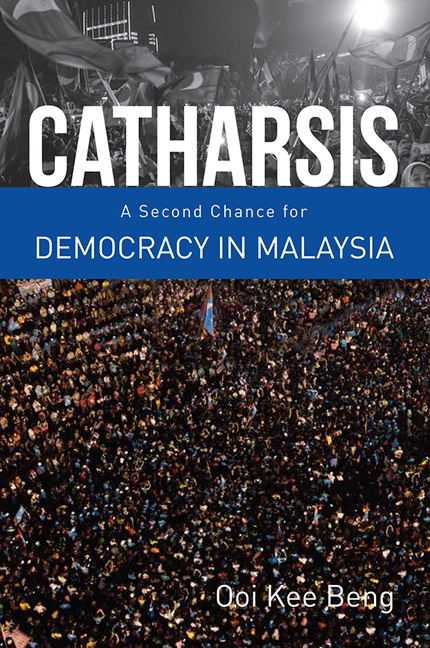Book contents
- Frontmatter
- Contents
- Foreword
- 1 Introduction – Malaysia's Future Is Redeemed
- Before Pakatan Harapan
- 2 After All These Years, Malaysia Is Still Held Hostage
- 3 Beyond the Nationalism Trap
- 4 Federating Malaysia — A Continuous and Troubled Process
- 5 Funeral for a True Son of Penang
- 6 Let's Work Out What Malaysia Is Good For
- 7 The Unity Fetish
- 8 When the National Narrative Loses the Script
- 9 Let's Be Cosmopolitan and Leave Multi-ethnicity Behind
- 10 Noses Don't Grow Back
- 11 Mahathir's Bersatu is Best Understood as an NGO
- Before 9 May 2018
- With Mahathir at the Helm
- Beyond 9 May 2018
- About the Author
3 - Beyond the Nationalism Trap
from Before Pakatan Harapan
Published online by Cambridge University Press: 12 February 2019
- Frontmatter
- Contents
- Foreword
- 1 Introduction – Malaysia's Future Is Redeemed
- Before Pakatan Harapan
- 2 After All These Years, Malaysia Is Still Held Hostage
- 3 Beyond the Nationalism Trap
- 4 Federating Malaysia — A Continuous and Troubled Process
- 5 Funeral for a True Son of Penang
- 6 Let's Work Out What Malaysia Is Good For
- 7 The Unity Fetish
- 8 When the National Narrative Loses the Script
- 9 Let's Be Cosmopolitan and Leave Multi-ethnicity Behind
- 10 Noses Don't Grow Back
- 11 Mahathir's Bersatu is Best Understood as an NGO
- Before 9 May 2018
- With Mahathir at the Helm
- Beyond 9 May 2018
- About the Author
Summary
One thing that shocked me when I first went to Sweden for my studies 35 years ago was how dirty a word ‘Nationalism’ was in Western Europe. This reaction, I realised, was very much a reflection of how the concept was positively implanted in my mind while a schoolboy in Malaysia but it also demonstrated how greatly human experiences can differ in different parts of the world.
More importantly, it revealed to me how strongly we are intellectually captured by the language use of our times and our location.
But the Swedes are very proud of their country, so how come nationalism is frowned upon so badly? The same thing applied throughout Europe, at least until recently. Excessive immigration over the last two decades, coupled with declining economic fortunes and waning self-confidence has buoyed the ascendance of ultra-rightist groups in all countries throughout the continent.
So why was Nationalism so despised? Europe is after all the home continent of the nation state.
For starters, Europe was always a place of endless wars often fought ostensibly for religious reasons between feudal powers. The arrival of the nation state ideology helped to lower the frequencies of these tragedies but only to replace it soon after with non-religious types of rationale for conflict. The American Revolution and French Republicanism added the new phenomenon of ‘government by the people’. The French case also brought into the equation the Left-Right Dimension that would define politics and political thinking for the next two centuries.
This conceptual division between Popular Mandate and Elite Rule expressed the rights of common people on the one hand and the role of the state on the other sharply. Once this gap was articulated, conflating the two poles anew became a necessary task.
The three major articulations in Europe of this mammoth mission to bridge the divide and achieve a functional modern system were Liberal Democracy, Communism and Fascism. While the Anglo-Saxon world championed the first, Stalin's Soviet Union perfected the second and Adolf Hitler developed the third to its insane conclusion. In Europe, it was basically these three actors who fought the Second World War.
In Asia, Japan's brand of state fascism ran riot throughout the region, rhetorically championing nationalism in the lands it took from the European colonialists.
- Type
- Chapter
- Information
- CatharsisA Second Chance for Democracy in Malaysia, pp. 10 - 12Publisher: ISEAS–Yusof Ishak InstitutePrint publication year: 2018



